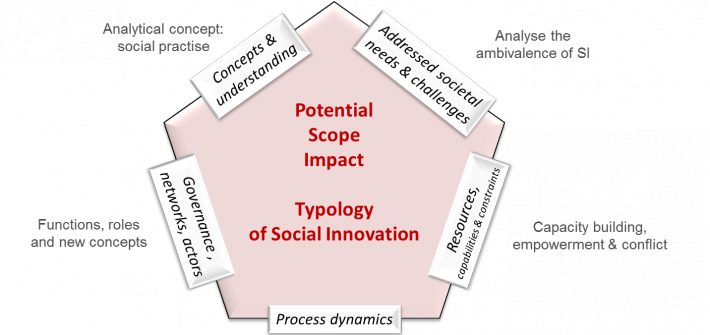The theory of innovation has a long history, dating back to the pioneering work of Schumpeter (2006) in the early 20th century. While much of the early theoretical work emphasised the socio-cultural dimensions of innovation (Kallen 1932, and other relevant predecessors like Tarde 1903; Ogburn 1966), this was gradually displaced in favour of more economic and technological perspectives. Recently, however, there has been a revival. The concept of social innovation is becoming increasingly evident in policy, scientific and public debates. There is a growing consensus among practitioners, policy makers, the research community and others that widespread social innovation is required to cope with the significant challenges that societies are facing now and into the future. The momentum for this revival is being driven by new projects, initiatives, methods and efforts to establish innovation. The field is practice led. And, as Mulgan (2012) has outlined, while there are many theoretical foundations which help conceptualise the field, there is not yet a comprehensive theory of social innovation.
Keeping in mind that there is not yet a sustained and systematic analysis of social innovation and its relationship to transformative social change, we elaborate five key dimensions of social innovation that fundamentally affect the potential of social innovations, their scope, and their impact (please see figure above). These are:
- Concepts of social innovation including the relationship to technology and business innovation
- Objectives and social demands, societal challenges and systemic changes that are addressed
- Drivers, barriers and governance (including the role of social entrepreneurship, networks, user involvement) of social change and development
- Social innovation cycle (prompts, proposal, prototypes, sustaining, scaling up, systemic change)
- Resources, capabilities and constraints including finance and regulations of the finance industries, human resources, empowerment
The SI DRIVE project will pull these dynamics of diverging theory and praxis together by proposing both a European and global mapping of social innovation practices, based on a coherent methodology, and the development of the empirically tested foundations of social innovation conceptualised as a means to empower people, reduce poverty gaps and influence on-going societal changes towards ‘smart, sustainable and inclusive growth’ (Europe 2020) as well as UN objectives such as the Millennium Development Goals (MDG; cf. UNDP 2000).
